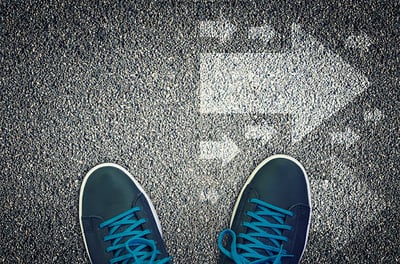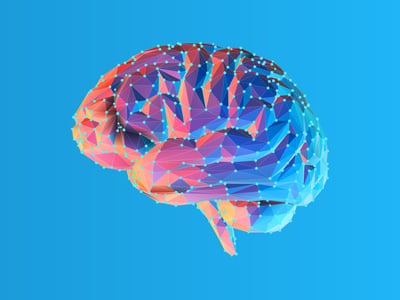March 30, 2021
 by Richard Lau / March 30, 2021
by Richard Lau / March 30, 2021
.jpg?width=3864&name=iStock-1191609321%20(2).jpg)
Building a brand today is tough.
Companies have to fight it hard to stand out in their niche. Marketing tactics aside, building a strong brand is of key importance. Your company is more than just marketing collateral. It’s the good logos stick. Bad ones don’t.
Try to remember the worst logo you've ever seen. What comes to mind? Most likely nothing.
Creating a logo is slightly different than creating other branding elements such as a business card. Unlike other brand design elements, logos are created, keeping' memorability' as a key focus.
Your logo is crucial to your brand. It represents your business. Its purpose is not to promote your company or make it popular but to make it stick. Your logo design sends out a powerful message about the kind of brand you are. For example, are you defining luxury or appealing to a more relaxed and hip audience?
All of these factors matter when you're creating a logo.
Before you embark on the journey of creating a logo, you must understand what it is and what it's supposed to do.
A logo is a symbol that represents your brand and its personality in the simplest way possible. It could be icons, an image, or maybe just plain text.
Logos aren't supposed to describe what your business is about literally. For example, if you're a plumber, you don't need a hammer, pipes, faucets, and all those elements in your logo to communicate who you are.
A logo's job is to identify the business in a memorable way and gives its users something to latch on to. This is why logos aren't created out of thin air. There are processes in place to ensure that your logo checks all the important boxes and does what it's supposed to do once it's ready: be memorable.
Like anything creative, there's no hard-defined process for creating a logo. Some designers set blocks of time and go through a disciplined approach from conception to execution. Others prefer to watch reruns of The Office until inspiration strikes.
The process listed below is more like a roadmap: something to follow through when creating a logo. It includes certain logo design tenets that you should be mindful of when designing your logo.
Take a second to think what kind of personality does your brand have? Are you outgoing or uptight? Calm or enthusiastic? Witty or straightforward? If you're at a party, are you the quiet one or the life of the party? A brand is the emotions people feel when they think about your business.
Designing with personality can be the difference between what sticks and what doesn't. Personality speaks to people, and it's what makes you memorable. The visual personality and traits of a logo can be similar to that of a human and reflect its various moods and traits. For instance, your logo can be fun, happy, bubbly, smart, flirty, geeky, and more.
Colors, typeface, lightweight, whitespace are some design factors that help translate a brand's personality into the design. Change any of these elements, and you can drastically change the mood of your design.
Want to see it in action? Here are some logo designs and the kind of brand personality they exude.
Axe targets the masculine gender. The sharp edges and bold design elements communicate the masculinity of the brand. The typeface and colors, too, are more bold than subtle.
The bright, friendly, colorful elements and fun typography communicates kid-friendliness, and games.
The first thing you notice about Apple’s logo is its simplicity. This personality trait is translated into everything that Apple does – from their packaging, their operating systems, their retail stores, and more.
For the longest time, their main philosophy has been to do everything easy and smart and the logo design depicts that sentiment.
While emulating brands that have done it right can be helpful, it's important to learn the basic dos and don'ts of smart logo design before getting started. We've compiled eight must-know tips for excellent logo design.
By definition, a trend is a general development or change in a situation or how people are behaving. Trends are constantly changing and evolving. On the other hand, your logo is supposed to be timeless and should focus more on your brand identity and personality instead of a passing trend.
New design fads come and go every year. It’s good to study and be aware of them. You could pick certain aspects and get inspired by them, like the glitch effect of the Tiktok logo. However, avoid getting carried away and create a trendy logo. Doing that will cause two major problems:
Trends that take the design world by storm one day tend to fade away just as quickly. So, evaluate it, see how it fits with your brand personality, and think about how it will be relevant ten years from today. Evaluate a phase and what’s here to stay before adapting it into your logo creation process.
The objective here is to get some inspiration and think about how you can differentiate yourself from the competition. Before you cast your net far and wide, do simple competitive research and see what’s happening in your industry. See what their logos look like and make some notes about it.
Competition analysis will also help you understand what kind of logo will help you fit in your niche but still stand out. During your research, create a folder with logos that you gravitate towards and then try to understand why you like them. It could be the colors, the font, maybe the icons? Having this initial information will give you a sense of the kind of logo you want to create for your brand.
How would you know that the logo you have will work just as well on a business card as it would on a digital banner or a giant hoarding? The easiest way to ensure that you’ve got your logo right is to think black and white.
It allows you to see your logo in its bare minimum state and blocks you from creating something over-complicated or so dependent on texture and colors that it’ll look bad if shrunk down to a minimal size.
For example, look at logos of some of the biggest brands. Almost all of them will have simple and clean logos. It’s usually small and local businesses that don’t have a huge budget to bring in a world-class logo designer who has busy-looking logos with a lot of elements and colors to highlight everything they’re doing.
Moreover, the colors black and white have strong psychological effects that you can take advantage of to depict your brand personality. In black, it gives a mysterious, elegant, and timeless feel, whereas white is clean and pure. It’s often used to highlight other colors or other colors to make the white stand out.
Minimalism takes the “less is more” approach and refers to a clean aesthetic that’s simple to understand. Minimalism is a creative recipe that eliminates anything that’s not needed and keeps only those elements that truly add value to the logo design. It favours clean, bold, and simple compositions with limited icons and images.
Minimalist logos work because they’re easy to process and remember. Instead of understanding everything that’s going on in the logo, minimalist design makes it easy for the logo to communicate what’s important.
The theme of this century is busy. Nonstop notifications, emails, pop-ups, and an always-on mentality makes it incredibly difficult for users to read and retain new information. There are always other, more important, things that need their attention.
In such a noisy world where attention spans are getting shorter, the only way to survive is to communicate more in less. Therefore, instead of cramming multiple elements such as fonts, colors, icons, shapes, stick to a single fundamental design that can be used across different mediums and backgrounds.
For example, consider brands such as Apple, Nike, Puma, Airbnb, Chanel, and more. Their logos are easy to remember because they’re simple. It’s this simplicity that makes them so powerful.
Typography is the art of arranging letters and text to make them more legible and attractive to the reader. It includes font style, appearance, and structure to exude certain emotions in the user.
Typography often gives the logo its personality. This is why you must know your brand personality before you start creating a logo. Once you know the personality of your brand, you can then use cool typography to highlight it.
Here are some ways you can use typography in your logo design.
A unique way to use typography is to combine individual letterforms to create a whole new unique experience. For example, Chanel and Yves Saint Laurent’s logos are perfect examples of this.
Another way to use typography is to use negative space--it is the space between or around a subject. A great example of this is the FedEx logo.
You could modify the shape, orientation, and size of your letterforms to create a great logo design. Staples is one of the many brands that has utilized this typography technique in their logo.
Typography doesn’t have to be limited to fonts. You can play with different colors to make your logo stand out. Many brands have used this approach including, Google, Baskin Robbins, eBay, and more.
This technique involves changing letters in your logo to an image or an icon. LG’s logo is a great example of this.
Design, similar to most other creative fields, has various rules and fundamental principles that dictate the kind of fonts and colors you can use and how to work with spacing and symmetry. While it's crucial to know these rules when creating a logo, the best designers know how to creatively bend and break them to create something truly unique to the brand.
For example, logos don't have to have to be static symbols necessarily. They can adapt, change, and be anything they want to as long as they stay relevant to the brand's identity. To do this, logo designers must be confident in their abilities and know-how to follow their instinct to create a visually wonderful experience. This also depends on the client and the kind of project. However, even the simplest of logos can bend some rules and be creative.
A great logo is scalable, but it can also be used on different platforms seamlessly. This is not a good-to-have feature but an absolute prerequisite when creating a logo. Your logo should look perfect on a business card, on a website banner, on product packaging, a hoarding, and everywhere else.
Since there's a significant difference in how designs look on a digital platform vs a printed one, it's best to test out your final logo design on every medium possible. Another great way to ensure that your logo adapts to all platforms is to make a responsive logo.
Responsive logos are shapeshifting logos that can change and adapt in size, complexity, and even colors to accommodate wherever they're placed. The benefits of having a responsive logo are obvious. Considering all the places where you may place your logo, it's nearly impossible to use the same logo everywhere without losing a little something here and there.
Responsive logos solve that problem and show the best version of your logo on all digital platforms.
Creating an inspiring, meaningful logo and building a connection with your users is tough and, therefore, important. To ensure that your logo has some meaning, consider the following points in the creation process.
You don't want to create a visually beautiful and appealing logo, but it means and communicates nothing. Your logo has to give your users something to connect with immediately. This could be a feeling or a message, and it's crucial because this will make your logo stand out and stay relevant for years to come.
Here are some examples of brands that have beautifully encapsulated meaning in their logo.
The Le Tour De France logo has two hidden meanings inside of it.
The first is the letter ‘r’ in the word ‘Tour’ that looks like a cyclist. The second message is the yellow circle that acts like the wheel of a cycle but also represents the sun as the event only occurs during the daytime.
A popular car brand, Audi’s logo has a great hidden message. The four rings in the logo represent the four companies that came together: Audi, DKW, Horch, and Wanderer became Auto Union AG.
Here are some common mistakes that you must avoid when creating a logo.
Logos are essential. They can be challenging to design, but they’re a must for any business that wants to thrive. Your logo is the face of your business, and it should communicate who you are, what you do, and why you do it. The tips mentioned above will give you a strong foundation to begin your logo design process.
Richard Lau was named 2004 “Domainer of the Year” and started NamesCon, which is now part of the Godaddy family. Another recent exit (to Indeed.com), Resume.com aids millions of job seekers to build their resumes online. His newest project is Logo.com.
When it comes to business, branding is everything.
 by Annisha Lashand
by Annisha Lashand
Can taste be taught?
 by Dawson Whitfield
by Dawson Whitfield
Rome wasn’t built in a day, and chances are, neither was your favorite website.
 by Mara Calvello
by Mara Calvello
When it comes to business, branding is everything.
 by Annisha Lashand
by Annisha Lashand
Can taste be taught?
 by Dawson Whitfield
by Dawson Whitfield


.jpg?width=400&name=iStock-937749836%20(1).jpg)